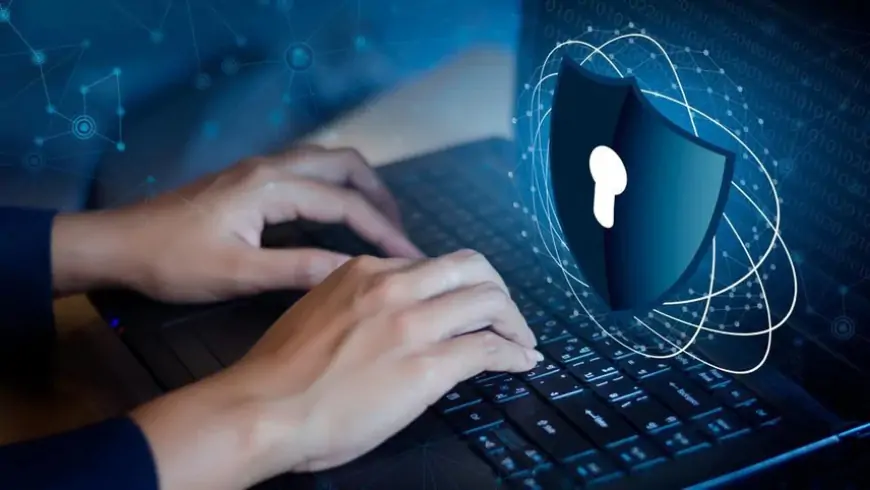Best 5 cybersecurity threats in 2024: A comprehensive guide
Discover the top 5 cybersecurity threats in 2024 with this comprehensive guide for staying ahead of evolving digital risks.

The projected global annual expense of cybercrime is set to hit $9.5 trillion in 2024, with damages for organizations due to cybercrime anticipated to climb to $10.5 trillion by 2025.
These figures underscore the ongoing challenge organizations encounter in safeguarding their systems and data from diverse cybersecurity risks.
In this piece, we'll delve into the primary 5 cybersecurity threats businesses should remain cautious of in 2024.
Elevated cybersecurity risks
According to a ForeScout Verdere Labs report, there were 420 million cyberattacks in 2023, equivalent to 13 attacks per second. These attacks emanated from 212 nations, with 28% originating from the United States. Additionally, there was a notable increase in attacks originating from China.
Best 5 cybersecurity threats
1. Cyberattacks
The foremost risk to businesses, individuals, and governments stems from various cyberattacks, such as malware, phishing, and ransomware. These malicious software can inflict severe damage on targeted systems, disrupting operations and causing downtime, particularly impacting technology-dependent organizations. Moreover, cyberattacks targeting critical infrastructure pose threats to national security and societal stability.
2. Geopolitical challenges
The proliferation of cyberattacks has reshaped the geopolitical landscape, with state and non-state actors leveraging these tactics for political ends. These actions, often termed cyberwarfare, not only endanger national security but also undermine economic stability and governmental integrity. The increased ease of executing such attacks heightens concerns about their potential impact on financial institutions, government bodies, and essential infrastructure.
3. Deepfake risks
Deepfake technology, utilizing artificial intelligence to fabricate convincing fake media, introduces new risks for organizations and individuals alike. By impersonating key figures, such as executives, deepfakes can disseminate false information, tarnishing reputations and causing financial harm. The adaptive nature of AI-powered deepfakes poses detection challenges, rendering traditional methods less effective and exacerbating the threat landscape.
4. Cloud-based menaces
Cloud computing, while offering numerous benefits, also presents vulnerabilities susceptible to exploitation by cyber threats. Attacks targeting cloud-based systems, networks, and applications aim to compromise data integrity, availability, and confidentiality. Common threats include exploitation of unprotected APIs, insecure cloud configurations, and malware/ransomware infiltrations, threatening data security and organizational reputation.
5. IoT security risks
With the proliferation of IoT devices projected to nearly double by 2030, the threat landscape expands alongside the increasing number of connected devices. This growth provides cybercriminals with a broader attack surface, amplifying the potential for cyber threats.
Among the most significant risks to IoT security are botnets and distributed denial-of-service (DDoS) attacks. Cybercriminals leverage botnets—networks of compromised devices—to orchestrate malicious activities, including DDoS attacks capable of disrupting online services and websites.
Furthermore, many IoT devices remain vulnerable to known cybersecurity vulnerabilities due to the lack of regular software updates. Exploiting these weaknesses, hackers can gain unauthorized access to organizational devices and networks, posing substantial security risks.
How can one defend against cyberattacks?
There are several recommended strategies that companies can adopt to safeguard their systems and data from cyberattacks:
- Enforcing strong password policies: Firms should mandate the creation of robust and unique passwords, regular password changes, and the use of multi-factor authentication for enhanced security.
- Employee education: Educating staff about cybersecurity best practices, including password management, VPN usage, phishing awareness, and handling sensitive data, is crucial in mitigating cyber threats.
- Data encryption: Encrypting sensitive data, whether it's in transit or at rest, helps prevent unauthorized access and ensures data remains secure.
- Regular software updates: Keeping operating systems, software, web browsers, anti-malware tools, and applications up-to-date on all devices is vital to patching vulnerabilities and safeguarding against cyber threats.
- Network traffic monitoring: Employing intrusion detection and prevention systems enables organizations to monitor and analyze network traffic, identifying and mitigating suspicious activity promptly.
- Multi-factor authentication: Utilizing multi-factor authentication adds an extra layer of security by requiring additional verification, such as codes sent to mobile devices, to access accounts.
- Third-party system monitoring: Regularly monitoring and auditing the systems and networks of third-party vendors and contractors ensures compliance with security requirements, identifying and addressing potential vulnerabilities or breaches.
- Establishing cybersecurity policies: Having formal cybersecurity policies in place that outline best practices and consequences for non-compliance is essential for promoting a security-conscious culture within the organization.
- Conducting security audits: Performing regular security audits helps detect weaknesses in systems and processes, allowing organizations to proactively implement measures to enhance cybersecurity and protect corporate data.
In conclusion, with the rise in cybercrime and cybersecurity risks, it's imperative for organizations to prioritize the protection of their systems and sensitive data against malicious actors.
This can be achieved through practices such as frequent software and system updates, the implementation of robust password policies, comprehensive cybersecurity training for employees, ensuring software systems remain current, and conducting routine security audits.












































